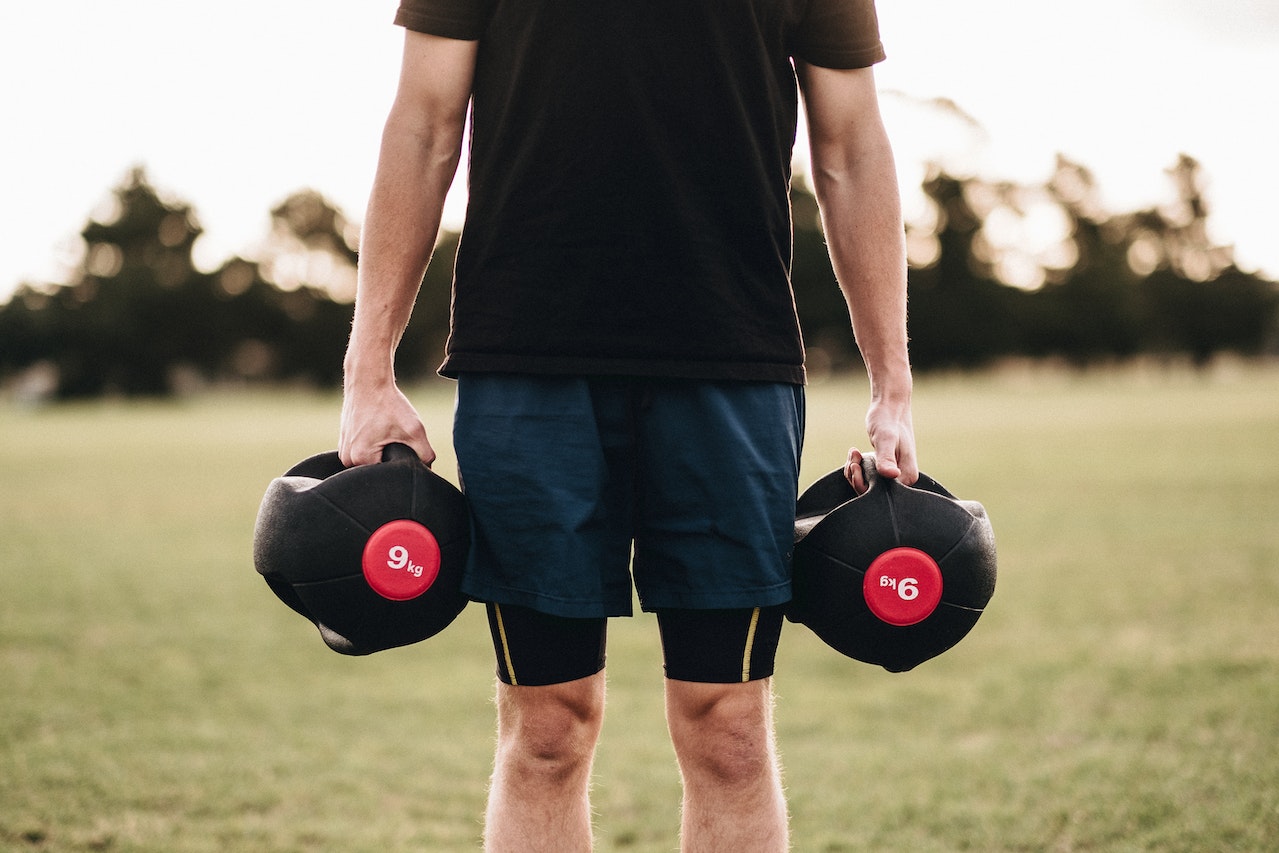
Looking to boost your metabolism and develop a sculpted physique? Start incorporating resistance training into your weekly exercise routine!
Resistance training is a style of exercise that focuses on improving your muscular fitness. This involves training your muscles to work against some form of resistance (like weights or bands).
Personally, I find resistance training to be one of the most empowering styles of training. I’ve been doing resistance training in my weekly exercise routine for over 20 years–and to this day I love seeing my body getting stronger and being able to move big weight!
You can start with resistance training today, no matter what equipment you have–even if you have no equipment at all!
Step 1. Get on a Schedule
To start with, keep in mind that building muscle is all about consistency! Get into a regular routine of doing resistance training 2-3 days every week. If you’re not sure where to start, check out my Trainerize page for beginner-level programs that you can follow.
Take a look at your calendar and see what days work best for you. Schedule your training sessions in your calendar, setting aside 45-60 minutes per training day.
In the first 1-2 weeks of your resistance training, your goals will be to:
- get into the habit of showing up for your training sessions 3 times per week
- learn the technique of the exercises in your program
- become more familiar with your muscles and what it feels like to work them
Step 2. Challenge Yourself
As you settle into your routine and master the basic technique of your exercises, you can begin to challenge yourself with more resistance (or more difficult variations of your exercises).
To get the most benefit from your training, you’ll need to train in a way that sends the right signals to your body to get your goal results. For muscle building, we need to challenge the muscles to the point of fatigue. That means you should feel a “burning” sensation in the target muscles towards the end of each set as they begin to get tired. End your set when your muscles are tired, leaving two or three reps in reserve (meaning, you could do two or three more reps if you needed to before your muscles give out).
Make sure to take your rest periods after each set to allow your muscles to recharge before starting the next set or exercise. Rest periods for muscle-building workouts can be anywhere between 1 minute and 5 minutes, depending on how hard you’re pushing your muscles in each set.
Step 3. Progressive Overload
Remember that you should always give your muscles slightly more challenge than what they’re used to. Over time, your body will get stronger and you’ll need to add more reps to each set of an exercise, more resistance, or do more difficult variations of exercises to keep your muscles growing. This is the principle of “progressive overload.”
Tracking your workouts is a great way to ensure that you’re practicing progressive overload. Each time you train, record the amount of weight you use and how many reps you do in each set.
A good rule of thumb is to do 8-12 reps in each set of an exercise.
Start with a weight that is challenging for you at 8 reps per set. Then over the course of a few weeks, try to do more reps in every workout until you can easily do 12 reps in every set of that exercise. At that point, increase the amount of resistance you’re using or switch to a more difficult variation of the exercise. This is how you’ll keep your muscles challenged and growing!
Make sure to pace yourself gradually.
I recommend sticking with the same routine of exercises for 6-12 weeks at a time so that you can properly track your progress and ensure that you’re overloading the muscle progressively. It’s a good idea, however, to switch up your routine every 6-12 week to give your body the novel stimulus that it needs to stay challenged. You can do this by swapping out certain exercises or by changing up your program completely.
Building muscle doesn’t have to be complicated, especially if you’re a beginner. Keep it simple! Remember to start with a schedule, challenge yourself with the right amount of resistance, and gradually increase your reps or resistance over time. Keep it simple and stay consistent! You’ll be well on your way to achieving your fitness goals with resistance training.
Get ready to see your body transform and experience the empowering feeling of getting stronger through resistance training! Check out my programs to get started.



